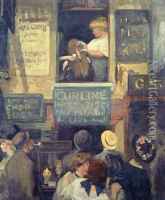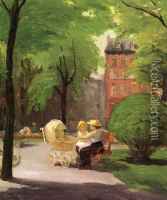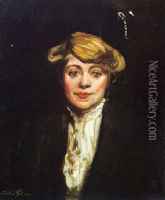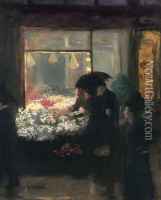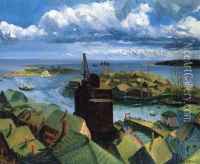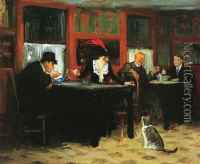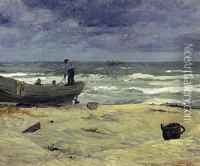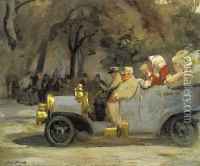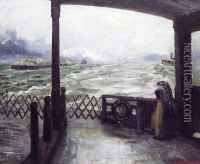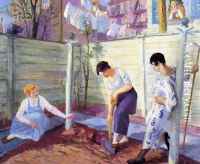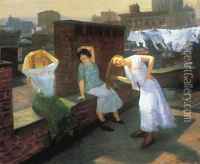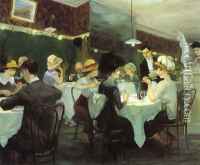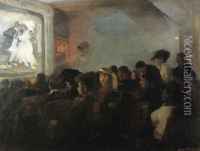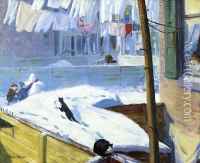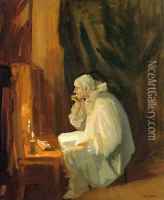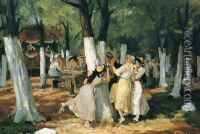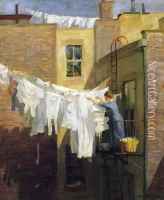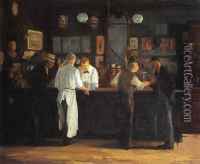John Sloan Paintings
John French Sloan was an American painter and etcher. He is considered to be one of the founders of the Ashcan school of American art. Born on August 2, 1871, in Lock Haven, Pennsylvania, Sloan grew up in Philadelphia where he studied at the Pennsylvania Academy of the Fine Arts under the guidance of Thomas Anshutz. Early in his career, he worked as an illustrator for Philadelphia newspapers where he honed his drawing skills.
Sloan moved to New York City in 1904 where he was influenced by the urban environment. His work from this period reflects the gritty reality of everyday life in the city, as he often depicted the urban working class, cityscapes, and social scenarios with empathy and a sense of realism. He was associated with a group of artists known as 'The Eight,' which included Robert Henri, George Luks, and William Glackens, among others. This group sought to break away from the academic traditions of American art of the time and to portray scenes of modern life in a more naturalistic manner.
Sloan was also an active member of the group known as the Ashcan School, a movement within American realism that sought to depict the less idealized aspects of daily life. Although the Ashcan School was not an organized institution, its artists were united by their focus on the portrayal of urban life. Sloan's works such as 'McSorley's Bar' and 'The City from Greenwich Village' are considered iconic examples of this style.
In addition to painting, Sloan was an accomplished etcher and was known for his illustrations and contributions to art theory. He taught at the Art Students League of New York for many years and influenced a generation of artists. His writings on art and his instructional texts were widely read and respected.
John Sloan continued to paint and teach until his death on September 7, 1951, in Hanover, New Hampshire. His legacy is preserved through his numerous works in museums and collections across the United States. Sloan's approach to painting and his dedication to capturing the vibrancy of American life made him a pivotal figure in the transition from the genteel tradition of American art to a more robust, realistic portrayal of the American experience.
